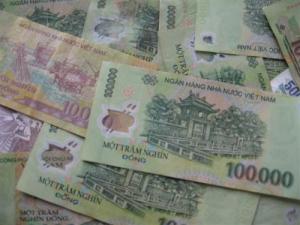Vietnam’s Central Bank Eases Restriction on Gold Imports

In attempts to reduce the gap between world gold prices and domestic rates, Vietnam has extended until the end of the year for traders to import gold. After careful consideration, the Central Bank announced its decision on Nov. 9 that it is allowing imports for 14 days so to “continue stabilizing” the local gold market. Vietnam’s inflation rate is estimated to hit under 10 per cent by the year end. With loan interest rates of between 18 and 20 per cent, necessary measures are urgently needed to deal with the odds. The gold quotas will expire on December 31, however, no specific details were given on the volume of imports allowed. On the other hand, the central bank also did not disclose any absolute volumes in its previous quota.
However, many strongly believe that the step could increase pressure on the dong considering the country’s trade deficit. Both the gold and foreign currency market are sensitive areas that easily influence people’s decisions. Statistics show that gold prices for this month jumped to 36.24 percent from last November and also increased 23.31 percent since December of last year.
The grant of additional quotas came after the government released data on its consumer prices showing annual inflation hitting a 20-month high of 11.09 percent in November from the same month last year as food prices soared. It can be recalled how the government has suspended gold imports in the past to support the dong, which investors sell to buy dollars and gold. The central bank is also continuing to “intervene” in the market by selling dollars to meet demand for imports of essential goods. Concerned sectors claim that the foreign-currency market has “moved toward a positive direction” in the past few days. Since the Central Bank’s announcement, no pressure on the foreign currency market was also seen.
Many see the need for the Central Bank to protect the domestic gold and foreign currency markets from strong fluctuations. Aside from the Central Bank, related agencies should also have timely, clear-cut interventions.









